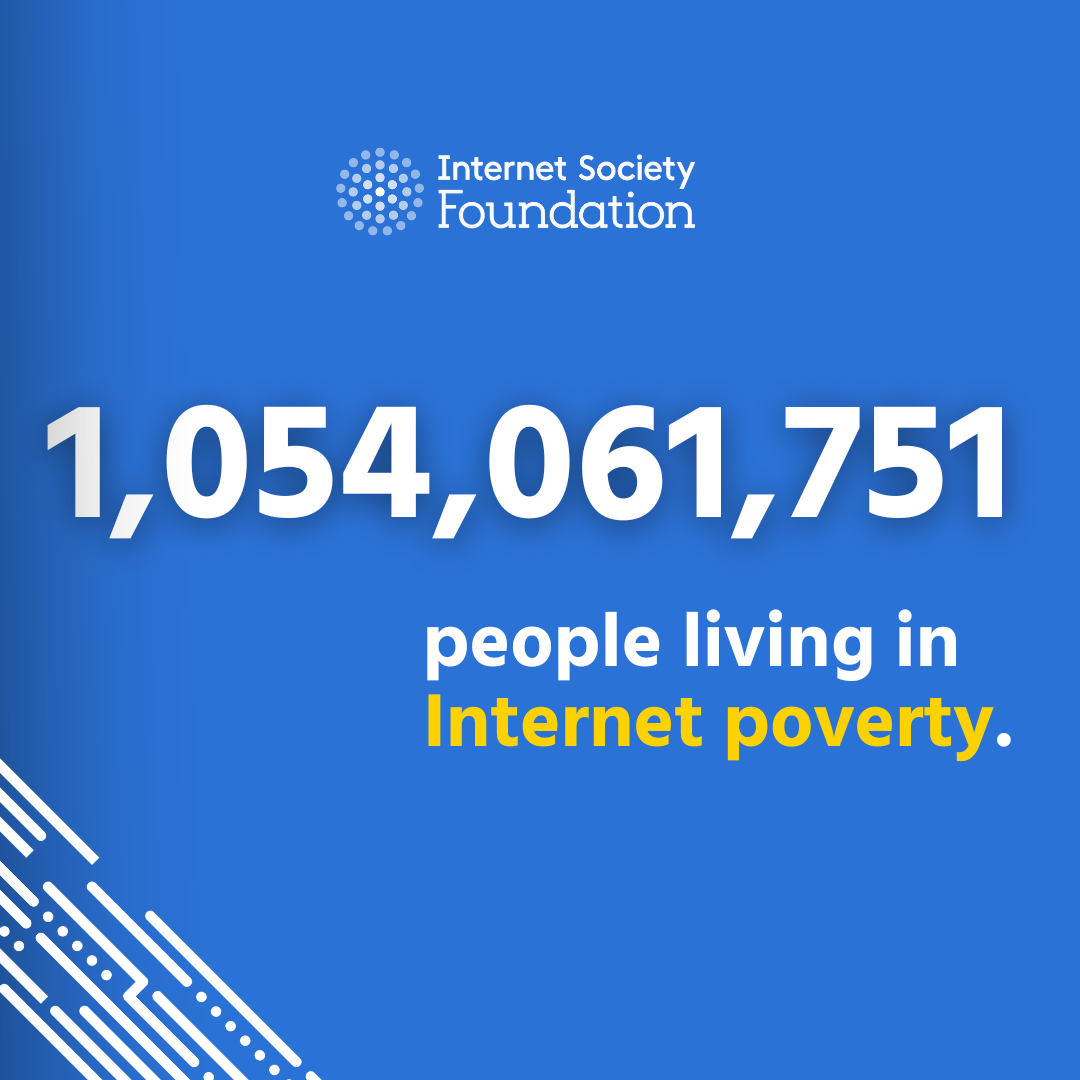Grant Program
Research
Grantee Name
World Data Lab
Grant End Date
31 May 2024
Amount Funded
US$485,375
Country
Not Country-Specific
Region
Global
RESEARCH QUESTION
In order to further support the equitable increase of global Internet usage, this research project leverages the current Internet Poverty Index (IPI) — developed by World Data Lab (WDL) with support from the Internet Society Foundation — and upgrades its features to analyze and model with greater granularity the segments of the population most in need of intervention to improve their access to the Internet.
The research questions are: Which demographic, economic and geographic groups are most affected by Internet poverty and which countries are making the greatest progress in reducing it? How can we promote greater access and use of the Internet to benefit the poor?
WHY IS THIS RESEARCH IMPORTANT?
To expand on the traditional poverty measurements, the WDL team developed in March 2022 a globally consistent methodology to gauge Internet poverty globally. With an enhanced tool and developed report, policymakers are able to understand which populations are most in need of intervention to prevent being left behind in terms of Internet usage.
The project produces indicators of inequality in Internet usage for every country from 2015 to the present, as well as forecasts for 2035. It also provides annual rankings for 2023 and 2024 and enables comparison across countries through the inclusion of national data and policies. This comparison enables the identification of an inclusion gap, which clearly displays the gap between those who can afford mobile Internet access and those who are using it, and allows tracking progress in the reduction of Internet poverty and the closing of the digital divide.
Depending on data availability, WDL produces subnational estimates for selected countries.
Building on the success of the ‘Internet Poverty Index’ ranking, which was launched in March 2022, WDL extends the ability to track United Nations Sustainable Development Goals (UN SDGs) – specifically the progress on communications infrastructure – while adding knowledge to the development community on topics relating to Internet access and inequality globally.
METHODOLOGY
With regard to data analysis, three main parameters are used to determine whether a person has the possibility to access and readily use mobile Internet. These three variables include affordability, quality, and quantity. First, affordability refers to the price of a mobile broadband service and is set with a person’s total expenditure. The Internet Poverty threshold of affordability is set to a maximum of 10% of a person’s total expenditure. Second, quality describes a multitude of factors such as download and upload speed, bandwidth, latency, 2G, 3G, and 4G coverage, as well as the number of servers per 100,000 inhabitants. Third, quantity refers to the amount of data that can be sent or received per theoretical user.
Once the thresholds on Internet affordability, quality, and quantity are defined, a hedonic pricing model is used to explain Internet prices based on Internet quality, infrastructure, and socioeconomic parameters on a global scale. In order to estimate this model, input data is combined from a variety of sources. For the dependent variable, Internet prices are based on data from the International Telecommunication Union (ITU), containing country-level information on the price of 1GB or 1.5GB of mobile data. To estimate the prices of 1GB in years for which ITU only provides data on the prices of 1.5GB, a transformation that is based on the difference in prices of 1GB and 1.5GB in data from the Alliance for Affordable Internet is applied.
To identify a suitable method for the estimation of the hedonic pricing model, WDL applies different approaches and evaluates their ability to predict actual prices for out-of-sample observations. Specifically, Lasso-regressions, Bayesian model averaging, and Random Forests are attempted. Next, all covariates are fixed related to Internet quality at the corresponding 25%-quantile, allowing for each country to predict the price of 1GB of data-only mobile broadband at this quality. This approach allows for the estimation of prices that are comparable across all countries.
Combining these numbers with World Data Pro global spending data, the estimates on how many people can afford mobile Internet are assessed. Therefore, the predicted prices are first merged with national spending distributions. Following this, the number of people for which the predicted price is below or equal to 10% of their total expenditure is computed. Setting this number in relation to each country’s total population, the Internet Poverty Index can now project the number of people who can or cannot afford a basic mobile Internet package in almost every country of the world up until 2035.
MEDIA AND PUBLICATIONS
See below for research publications and other articles related to the research.
https://worlddata.io/portfolio/2023-internet-poverty-index/
https://www.brookings.edu/articles/ending-internet-poverty/
https://www.brookings.edu/articles/measuring-internet-poverty/
https://www.brookings.edu/articles/internet-poverty-the-next-frontier-in-development/

